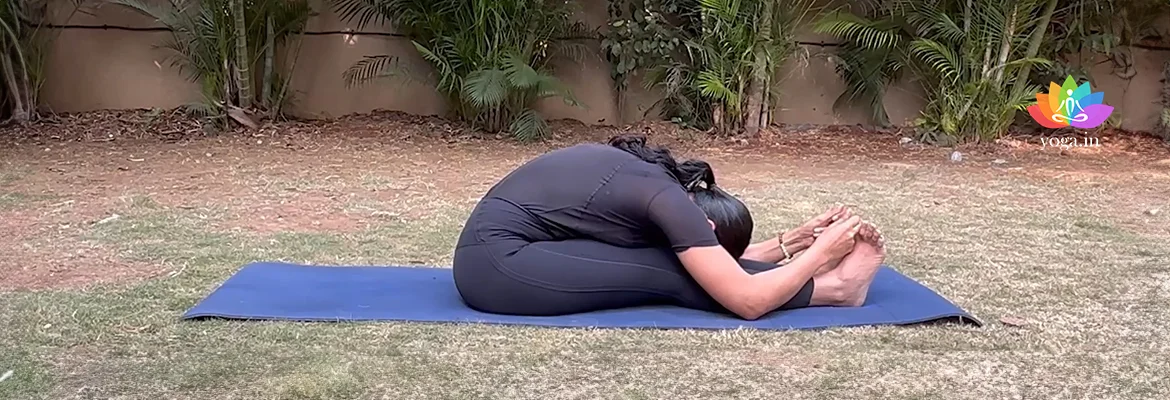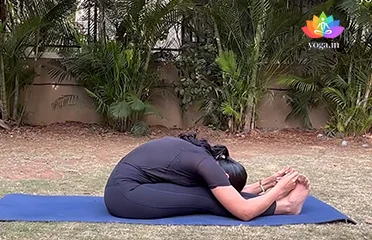First sit on the ground, stretching both legs outward.
Introduction to the Asana
The Sanskrit name is derived from three sanskrit words: Paschima (पश्चिमा) meaning west or back of the whole body from the head to the heels, Uttan (उत्तान) meaning to stretch oneself upwards and asana (आसन) meaning posture or seat.
Step to get in the pose
-
-
Toes should remain together pointing forward.
-
Now, Inhale raising your arms, extending the spine and then slowly bending the body forward while exhaling.
-
Exhale while bending forward and widen the elbows using them as levers, pulling the trunk forward and touching the forehead to the knees.
-
In the final stage, interlocked fingers should be beyond the toes and the nose should touch the knees.
-
Be in the position as long as you feel comfortable.
-
Inhale and come to the original position.
Common mistakes and pitfalls
-
Never overstretch your hamstrings or force yourself while trying to bend forward.
Benefits
-
Improves appetite, helps in digestion, and relieves constipation.
-
Can help treat gastric issues, cholecystitis, pancreatitis, and ulcerative colitis.
-
Tones abdominal organs and kidneys.
-
Enhances spine mobility.
-
Helps in treating infertility.
-
Reduces Anxiety.
Contraindication
-
Avoid if suffering from a slipped disc or undergone any surgery.
-
Avoid if suffering from a hernia, stomach ulcers, or diarrhoea.
-
Avoid during pregnancy.
-
Avoid in case of heart disease, asthma and respiratory problems.




